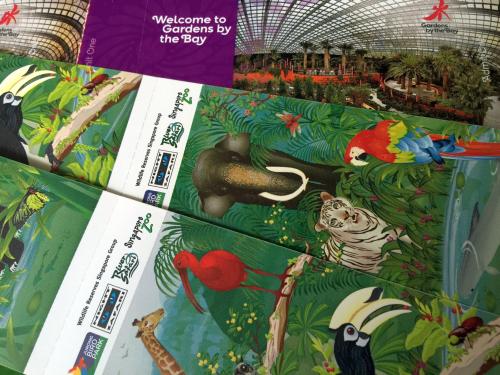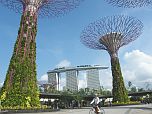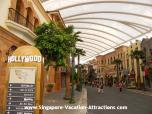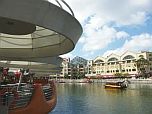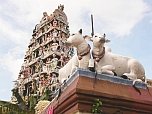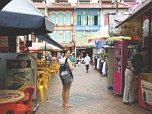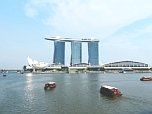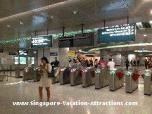Colonial Buildings and The North Bank of Singapore River
Explore The North Bank of Singapore River
The majority of colonial buildings are located on the north bank of Singapore River. Under Raffles' Town Plan of 1822, this area was allocated as the Civic District of the British Colonial Government.
As most of the buildings were situated near by each other, it's best to explore them on foot. The following walking tour starts from Raffle's Place MRT Station and ends at St. Andrew's Cathedral. It takes about one hour to complete the tour. You may want to take a look at Boat Quay and the South Bank of Singapore River in order to have a complete understanding of the history of Singapore River.
Colonial Building Photos
Go to Colonial Building Photos page for more pictures
Getting There: How to Get to the North Bank of Singapore River?
Click on the Singapore Street Map which will show you a map of Singapore River and how to get to Raffles Place MRT station from any part of Singapore by public buses and MRT(subway).
At Raffles Place MRT station, look out for signage for Exit G (to UOB Plaza). Once you come out of the escalator, go ahead and you will come to the Singapore River. Turn right and keep walking along the river bank and you will arrive at Cavenagh Bridge. Cross the bridge and you will see the first colonial building, Asian Civilisations Museum.
Asian Civilisations Museum
Completed in 1865 as a courthouse, it was later being used as various government offices due to relocation of the court. In 1989 it was converted into a museum known as Empress Place Museum which served the public for 6 years, before transformed into the present museum. Visit Asian Civilisations Museum for more information about its history, galleries and more.
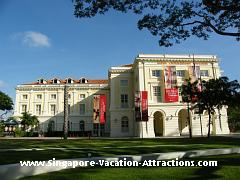 |
Arts by the river
Behind the Asian Civilisations Museum, you will come across the following two sculptures. The first is known as From Chettiars To Financiers and the other The Great Emporium
Raffles' Landing Site
The photos below shown the statue of Sir Stamford Raffles. This is the spot where he is believed to have landed on 29 Jan 1819. The founder of Singapore, Raffles had managed to establish a free port here and this has help Singapore to become one of the busiest port in the world.
Sponsored Ads
Victorial Theatre and Victorial Concert Hall
Located in front of Asian Civilisation Museum, Victorial Theatre was one of the oldest colonial buildings built in 1862 as the Town Hall. It was a typical British neo-classical architecture which was popular in the 19th century. The Theatre was connected to the nearby Concert Hall (built in 1905) by a clock tower.
You will find a bronze statue situated in front of the Victoria Theatre and Concert Hall. This was the original Stamford Raffles' bronze statue which was moved here in 1919 and unveiled by the Governor, Sir Arthur Henderson Young.
The Arts House (The Old Parliament House)
Located behind of the Victorial Theatre, the Old Parliament House was built in 1827 by Coleman and was the oldest surviving government building here. It was served as the Parliament House from 1965 to 1999 before being converted into an art gallery to support local arts.
The Old Supreme Court Building
Built in 1939 and designed by Frank Dorrington Ward, it is the last neo-classical colonial building built in Singapore. The facade of the building was remarkable for its Corinthian columns, huge dome and lively sculptures located at the centre of the court. Take time to appreciate the sculptures, which were crafted by the Milanese Sculptor Cavalieri Rudolfo Nolli, they were great.
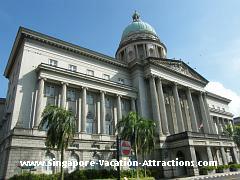 |
The large dome is actually a miniature version of the dome of St. Paul's Cathedral in London.
City Hall
Located next to the Old Supreme Court Building, City Hall (above right photo) was built in 1929 and has witnessed a number of important historic events of Singapore. Singapore's first Prime Minister, Mr Lee Kuan Yew, declared Singapore's independent here on 9 Aug 1965.
St. Andrew's Cathedral
St. Andrew's Cathedral was built from 1855 to 1857 by convict labour. Check here for more informtion and history of St. Andrew's Cathedral.
Hotels in Colonial District
Highly Recommended Hotels in Colonial District
Budget Hotels in Colonial District
Mid-Range Hotels in Colonial District
Luxury Hotels in Colonial District
Family Hotels in Colonial District.
Tourist Attractions along Singapore River
Photos of Colonial District
Singapore River and Its History
Embark on a Singapore River Cruise
Boat Quay and the South Bank of the River
Photos of Boat Quay
Clarke Quay
Photos of Clarke Quay
Asian Civilisations Museum
Hotels along Singapore River
Return to Singapore River page
Search this site
Singapore Vacation Deal
- Singapore Attractions Tickets Deal
- Tickets Deal Frequently Asked Questions
- Ticket Deal Customer's Testimonials
Most Visited Singapore Attractions
Popular Attractions
Wildlife, Gardens & Parks
- Singapore Zoo
- Night Safari
- River Safari
- Jurong Bird Park
- Gardens by the Bay
- Singapore Botanic Gardens
- National Orchid Garden
- Mount Faber Park
Family-friendly Attractions
- Sentosa Beach
- Mint Museum of Toys
- Zoo's Rainforest Kidzworld
- Far East Organization Children Garden and Playground
- Singapore River Cruise
Museums & Historical Monuments
- Asian Civilisations Museum
- National Museum of Singapore
- Singapore River
- Colonial Buildings
- Sultan Mosque
- Indian Temple
Sightseeing Tours
Suggested Tour Itineraries
- 5 Days Singapore Tour Itinerary
- 4 Days Tour Itinerary for Family
- Singapore Tour Guide for First Time Visitors
- Half Day Sightseeing Tour
- Singapore City Tour
Must-try Singapore Food
Getting to Singapore Attractions
Getting to:
How to get to:
From city areas to:
Business Partner Site
Learn from SBI how to build a profitable website business by:
This website is Powered by SBI.
